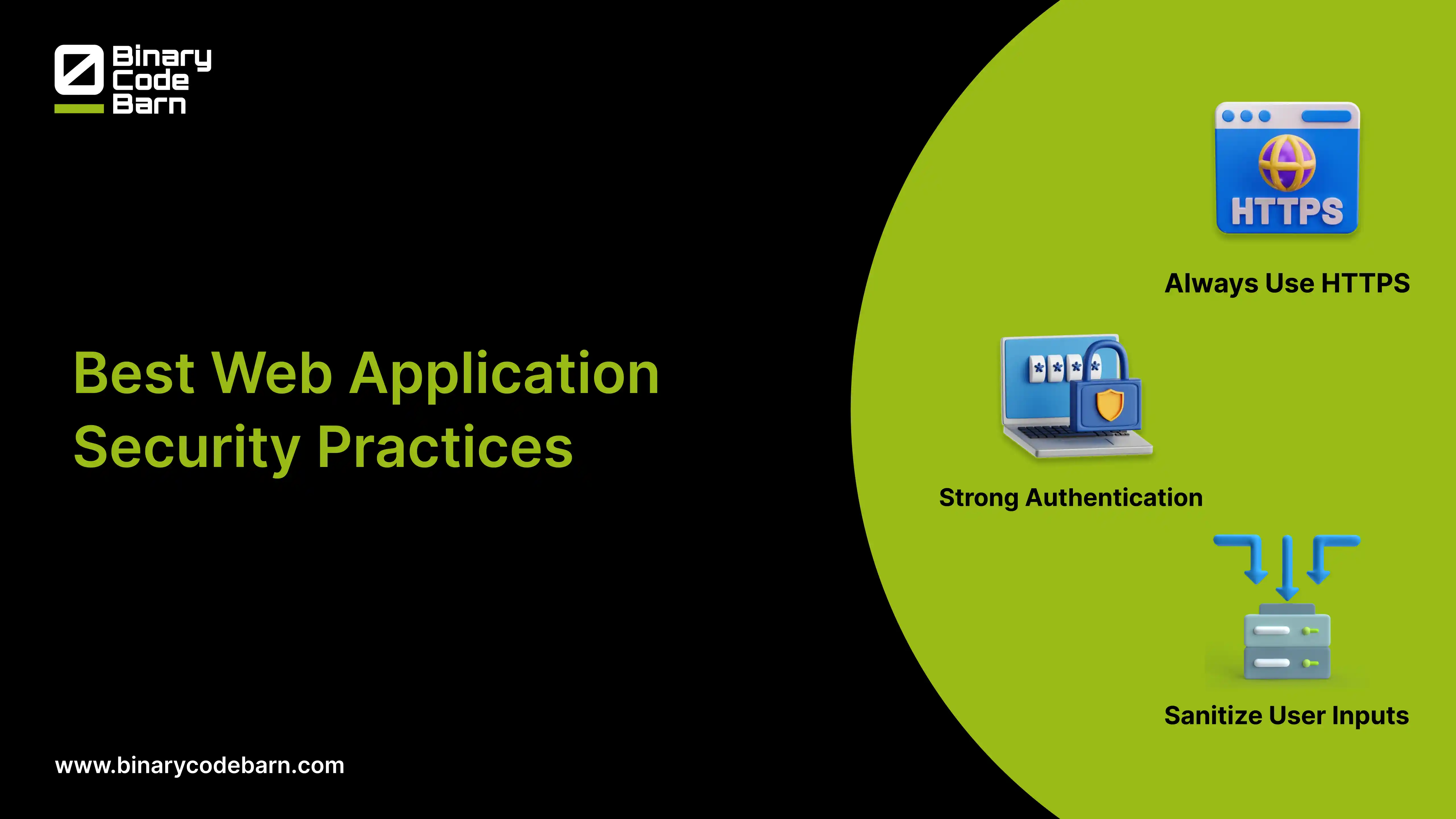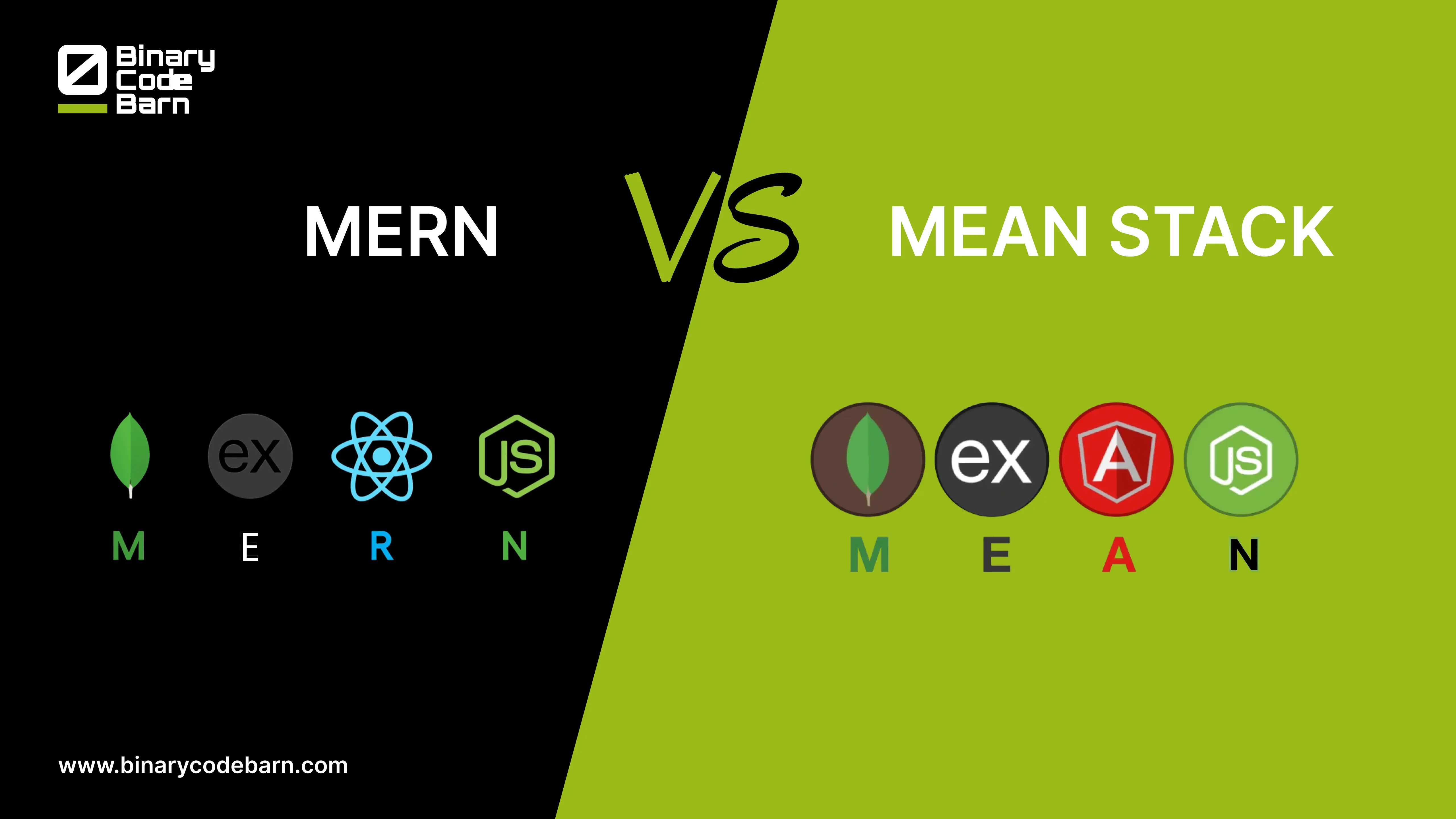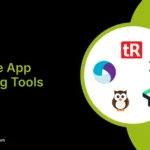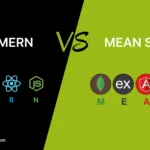In a digital world web applications are essential for businesses to deliver their services but they’re also prime targets for cyber attacks. Security has become a critical concern as we rely on these platforms for handling data. Cyber attacks and data breaches are on the rise. From financial losses to reputational damage, weak security can have severe consequences.
Implementing web application security best practices is essential for protecting not only the app itself but also the data, network, and servers it interacts with. The best thing is that Binary Code Barn provides the best solution for such issues.
In this article, we’ll cover how to secure web applications from vulnerabilities to help you secure your web applications.
Also Check: MERN Stack Security
What is Web Application Security?
Web application security focuses on protecting web applications, websites, and web services like APIs from internet-based threats. It’s a specialized area within information security that covers various strategies, technologies, and practices to secure apps. This type of security aims to prevent attacks that can compromise sensitive data or disrupt service functionality. It ensures safe and reliable interactions for users and protects systems from data theft or service interruptions.
Need for Web Application Security Solutions
From social interactions to finances, web applications are integral to nearly every aspect of life, making them prime targets for attackers. Here’s why secure web application development is essential:
- Increasing Threats: Cybercriminals constantly seek vulnerabilities in web applications leading to potential financial loss, brand damage, and loss of customer trust.
- Compliance Requirements: Regulations around data privacy demand strict security measures, with non-compliance risking fines and legal repercussions
- Growing Complexity: With mobile apps, cloud computing, and microservices web applications are more complex, broadening attack surface and making security increasingly challenging
Securing Web Applications is crucial to safeguarding data, maintaining trust, and staying compliant.
Common Web Application Security Risks
Before discussing how to protect web applications you need to know common web app security risks. Web app security risks are threats that can lead to data breaches & damage. Here are some top security threats:
- Injection Attacks: Untrusted data sent to an interpreter, leading to unintended commands or queries
- Broken Authentication: Poorly implemented authentication allowing unauthorized access
- Sensitive Data Exposure: Inadequate protection of sensitive data, such as encryption failures
- XML External Entities (XXE): Malicious XML data processing that exposes internal files or executes remote requests
- Broken Access Control: Weak access control mechanisms that allow unauthorized actions
- Security Misconfiguration: Incorrect configuration of security settings, leading to vulnerabilities
- Cross-Site Scripting (XSS): Injection of malicious scripts into webpages, affecting users
- Insecure Deserialization: Unsafe deserialization leading to remote code execution or attacks
- Using Components with Known Vulnerabilities: Use of outdated libraries or components with known security flaws
- Insufficient Logging and Monitoring: Lack of detection for malicious activity or response to incidents.
Web Application Security Best Practices
In the past, IT security mainly focused on network and operating system security. However, as web-based apps have become central to nearly every aspect of our lives the focus has shifted to cybersecurity. Given are some web application security best practices that companies should follow:
Use Input Validation
Input validation is the process of verifying that user input is valid and safe. It is essential for preventing security vulnerabilities like SQL injection and cross-site scripting (XSS).
Key Types of Input Validation
- Data Type Validation: Ensures data is the correct type (e.g., numeric, text).
- Data Format Validation: Confirms data follows format guidelines, like JSON or XML.
- Data Value Validation: Ensures input values meet expected ranges or lengths.
Effective input validation involves both syntactic checks and semantic checks. Input validation should ideally be done on both the front end and back end, with backend validation prioritized. Many frameworks offer tools for secure input handling, like parameterized queries, stored procedures, or ORM solutions, which help avoid common vulnerabilities.
Use of Web Application Firewall (WAF)
WAF is a vital security tool that protects web apps from common attacks like SQL injection, cross-site scripting, etc. Acting as a filter for HTTP traffic a WAF blocks malicious requests from reaching your database and helps secure server-client communications.
While not a complete solution for all threats, WAFs are straightforward to implement and provide an essential first line of defense. Many cloud providers include WAFs in their services, and platform-agnostic options like Cloudflare WAF or Wallarm Cloud WAF are also available.
Secure Coding Practices
Secure coding practices are essential for protecting web applications from vulnerabilities. Here are key practices:
✔ Input Validation: Always validate user input to prevent attacks like SQL injection and XSS.
✔ Parameterized Queries: Use these to avoid SQL injection attacks.
✔ Avoid Hardcoding Sensitive Data: Store passwords and credentials securely.
✔ Use Cryptographic Libraries: Implement secure encryption for sensitive data.
✔ Regular Code Reviews: Conduct reviews to detect and fix security issues.
✔ Update Codebase Regularly: Keep libraries and dependencies current to patch vulnerabilities.
By following these practices, developers create resilient code that helps guard against potential exploits.
Encrypting Your Data
Encryption encodes sensitive data making it unreadable to unauthorized users. It’s essential for protecting data both in transit & at rest. Encrypting data is crucial for web services and APIs as well unauthorized access to unsecured services is a common attack method. Implementing encryption effectively secures web apps and shields private data from threats.
Regular Updates
Keeping software updated is necessary for web app security. Software vendors release patches to fix vulnerabilities that attackers can exploit. Regularly check for updates for web server, databases & third-party libraries. Applying these updates promptly helps prevent security breaches and minimizes potential risks.
Use Strong Authentication Mechanisms
Strong authentication is vital for web application security. Weak methods like easily guessable passwords can expose your application to attacks. Implement multi-factor authentication or two-factor authentication to require additional verification such as a code sent to a users phone or biometric data along with the password. These mechanisms provide extra layers of security ensuring only authorized users can access sensitive areas of your web application.
Auditing and Logging
Auditing and logging are essential for maintaining security at the server level. Logs often serve as the only record of suspicious actions, providing accountability by tracking user activities and helping identify potential security threats. Unlike error logging, activity or audit logging generally requires minimal setup since it’s embedded in most web server software.
Effective error handling and logging can help detect potential security issues early, preventing them from becoming significant threats. Detailed logs of application events assist in identifying security threats and serve as valuable resources for tracing and addressing breaches. However, it’s equally important to protect log data from unauthorized access.
Rigorous Quality Assurance and Testing
Using third-party services for penetration testing and vulnerability scanning, in addition to in-house QA, strengthens security by catching hidden vulnerabilities. Adding extra layers of testing ensures even minor weaknesses are addressed. To streamline security upgrades and testing, maintain a clear, repeatable process and a detailed inventory of all web applications to avoid confusion.
Ensure your web apps meet PCI and HIPAA standards, consulting specialists when necessary to guarantee compliance and strong security practices. After an upgrade, always run a full QA test cycle to confirm everything works as expected, preventing any accidental vulnerabilities from being introduced.
BCB Providing Web Application Security Best Practices
In a digital world where web applications are essential for business security is crucial to protect against rising cyber threats and data breaches. Weak security can lead to severe consequences, from financial losses to reputational damage. Binary Code Barn (BCB) offers robust web application security solutions designed to safeguard your applications, data, network, and servers. Here’s why partner with us:
- Expert Team: We have skilled professionals who know how to keep your web application safe from hackers and threats.
- Custom Solutions: Every business is different, so we create security plans tailored to your specific needs.
- Latest Tools: We use advanced tools to find and fix vulnerabilities quickly.
- Proactive Protection: We stop threats before they become problems, keeping your application secure at all times.
- Regulatory Compliance: Our solutions ensure your app meets all legal and industry security standards.
- Reliable Support: We provide 24/7 assistance to keep your application secure and running smoothly.
What Makes Binary Code Barn Exceptional?
- End-to-End Security
- Proven Results
- Built-in Security
- Always Up-to-Date
- Client Empowerment
Choose Binary Code Barn for reliable, effective, and easy-to-manage web application security solutions. Contact Binary Code Barn Today!
FAQs
What is web application security?
Web application security protects websites, apps, and APIs from internet-based threats, securing data and maintaining safe user interactions.
Why is web application security important?
Security helps prevent data breaches, financial losses, reputational damage, and non-compliance fines, ensuring customer trust and data integrity.
What are common web app security risks?
Risks include injection attacks, broken authentication, sensitive data exposure, misconfigurations, and insufficient logging.
How does input validation help secure web apps?
Input validation checks user data to prevent attacks like SQL injection and cross-site scripting (XSS), ensuring only safe data is processed.
What is a Web Application Firewall (WAF)?
A WAF filters and blocks malicious HTTP traffic, protecting apps from common attacks such as SQL injection and XSS.
Why is encryption important for web apps?
Encryption secures data in transit and at rest, making it unreadable to unauthorized users, especially in APIs and web services.
How does Binary Code Barn enhance web application security?
BCB provides comprehensive security solutions, including secure coding practices, compliance checks, regular audits, and quality assurance testing to protect applications from vulnerabilities.













